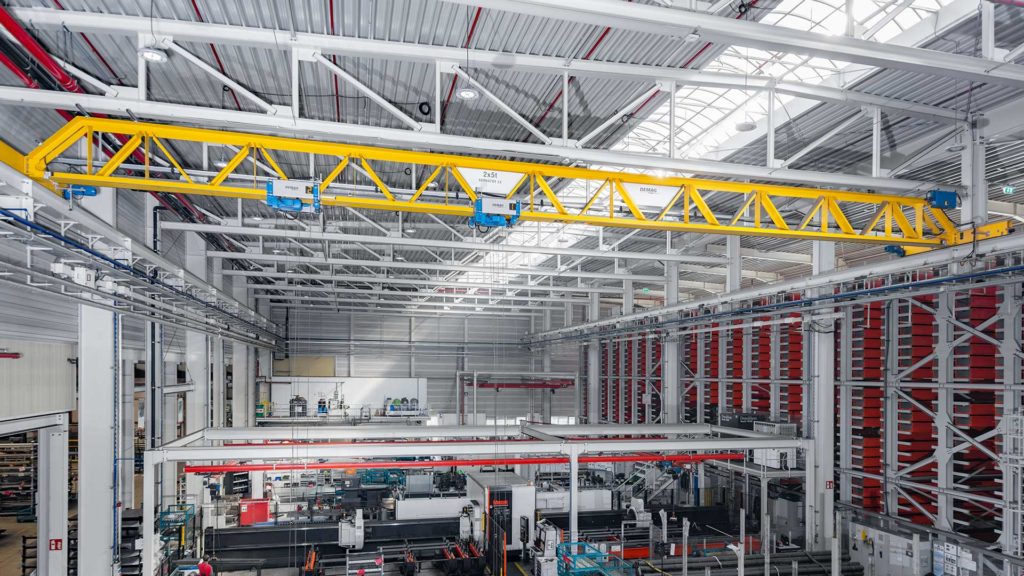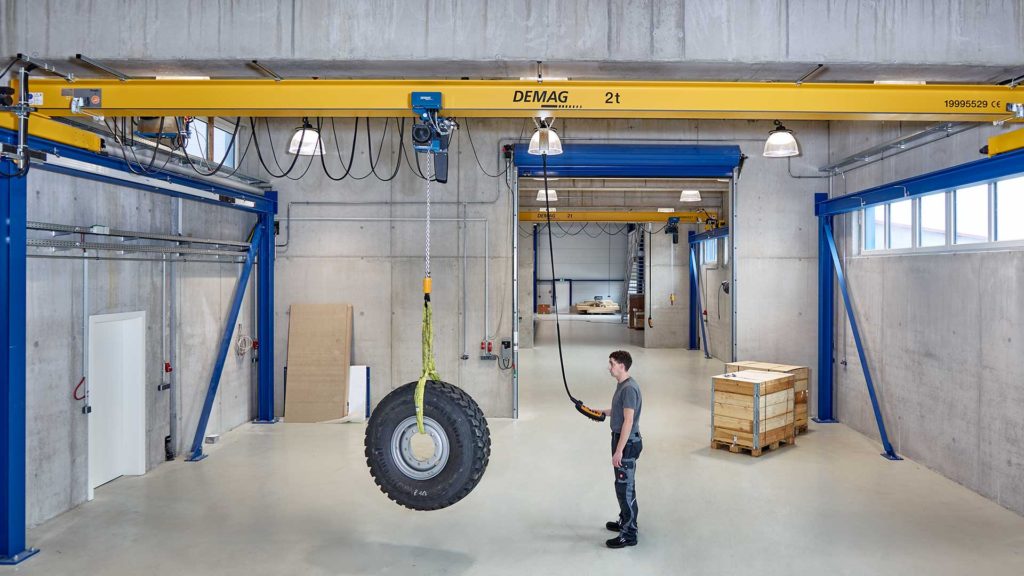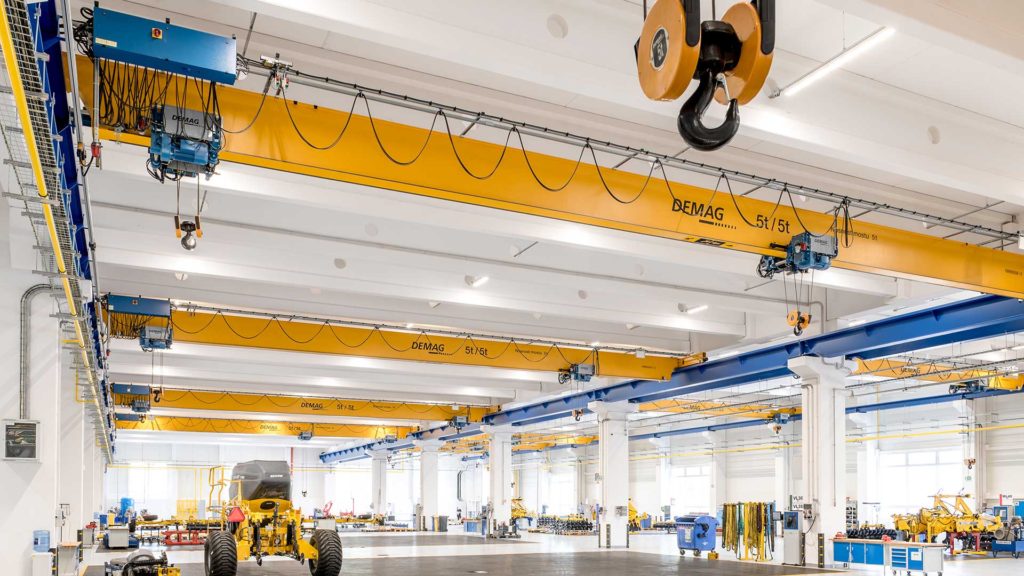Single girder cranes are found throughout many manufacturing operations with heavy lifting needs. These 2 ton, 5 ton or higher capacity cranes allow for efficient, reliable, and safe operations in your facility. Demag single girder crane sets meet the varied needs of lifting operations all over the world.
Identify Demag Cranes with 4-Letter Acronyms
Demag manufactured overhead cranes for many decades in the USA and Canada. These cranes are denoted by a 4-letter acronym telling more information about it. The Demag EKKE Crane is a box girder with top running end trucks. The box girder makes this crane very robust for a wide variety of lifting in many manufacturing environments. The EPKE is a beam girder with top mounted end trucks. This type of crane is commonly found when lifting requirements are lower with shorter spans. The Demag EVKE crane is built with our v-girder. The v-girder can be attached to the end trucks in a variety of configurations so the 4-letter acronym does not specify this.

Other Demag crane descriptions are for underrunning and gantry type cranes. The EDKE is an underrunning box girder crane, meaning the bridge is attached to underrunning end trucks. When this configuration is a beam girder, it is an EPDE Demag crane. Half gantry crane bridges are supported on one side with the runway supported by the building structure and the other side supported by a freestanding support running on rail and/ or wheels.
The patented V-Type girder, only from Demag, is flexible and efficient. The design of the girder cuts the deadweight of the crane by an average of 17% and reduces oscillation to double the service life compared to box girders (500,000 changes of loads). The girder allows for 30% more light in the crane area and, in outdoor applications, reduces wind resistance by 55%.
Box girders are fabricated steel structures welded together to meet the requirements of the crane. You will see these girders in single girder cranes at certain capacities and to support long spans.
Beam girders can fit the job when the span is shorter, and the capacity is lower. Commonly, the beam will be a part of a single girder crane that is top mounted on the end trucks. You may also see this girder type on underrunning cranes where the girder is mounted on the bottom of the end trucks.
Choose the hoist to meet your needs.
Choosing the right lifting device for your crane is a critical step to the RFQ process. Overhead cranes typically use a chain hoist or wire rope hoist to meet the specific needs of the lifting operations. There are benefits for either type of hoist so partnering with an expert crane manufacturer or dealer will ensure the project will be successful.

Chain hoists can be an effective and cost-effective hoist for lifting operations. Demag DC Chain Hoists can lift loads up to 5 tons. These hoists can be attached to the bridge with a motorized trolley. The hoist is then powered with an attached pendant or radio.

As your lifting capacities grow, a wire rope hoist is an effective tool to optimize your lifting operations. A standard wire rope hoist, like the Demag DVR rope hoist, can meet your needs in a typical environment without any extreme variables like high heat or moisture. When the lifting environment does get more demanding, like environments like galvanizing, you can even upgrade to the Demag DH wire rope hoist which is a robust option when environments exceed the capabilities of a standard wire rope hoist.
The complete package
When you need a single girder crane, partner with an experienced crane builder. Not only will you work with the experts who can design the application to your needs, but they will be able to come to your site to help tailor the details. These partners will assure the crane application will meet your reliability, and safety needs in the lifting area. Reach out to us to be referred to a Demag crane builder.
